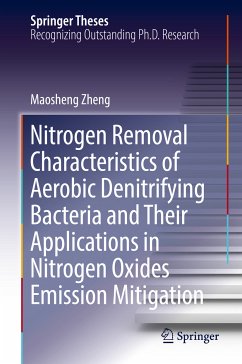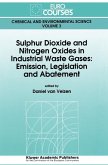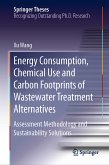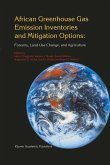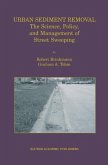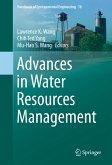This book systematically investigates the nitrogen removal characteristics of two screened aerobic denitrifying bacteria and their applications in nitrogen oxides emissions reduction. It reveals that Pseudomonas stutzeri PCN-1 possesses excellent capacity for aerobic nitrogen removal, regardless of whether nitrate, nitrite or N2O were taken as denitrification substrates. It also demonstrates that the rapid N2O reduction is due to the coordinate expression of denitrification genes. Further, the book discusses the bioaugmentation experiments conducted in denitrifying SBR and a pilot-scale Carrousel oxidation ditch, which confirmed that the strain could significantly enhance denitrification performance, reduce N2O emission and improve system stability. The second strain, P.aeruginosa PCN-2 accumulated negligible NO during aerobic nitrate and nitrite removal and efficiently removed NO from flue gas. This study is of great significance for potential applications of aerobic denitrification in mitigating nitrogen oxides emissions from biological nitrogen removal systems.
Dieser Download kann aus rechtlichen Gründen nur mit Rechnungsadresse in A, B, BG, CY, CZ, D, DK, EW, E, FIN, F, GR, HR, H, IRL, I, LT, L, LR, M, NL, PL, P, R, S, SLO, SK ausgeliefert werden.
Es gelten unsere Allgemeinen Geschäftsbedingungen: www.buecher.de/agb
Impressum
www.buecher.de ist ein Internetauftritt der buecher.de internetstores GmbH
Geschäftsführung: Monica Sawhney | Roland Kölbl | Günter Hilger
Sitz der Gesellschaft: Batheyer Straße 115 - 117, 58099 Hagen
Postanschrift: Bürgermeister-Wegele-Str. 12, 86167 Augsburg
Amtsgericht Hagen HRB 13257
Steuernummer: 321/5800/1497
USt-IdNr: DE450055826

